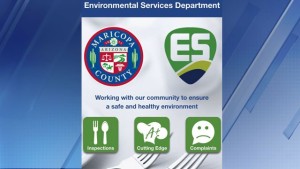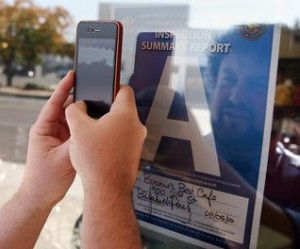The collection of comprehensive data on both food exposure history and gastrointestinal symptoms associated with foodborne illness is typically challenging because of poor compliance with data collection methods. Smartphone technology provides a convenient tool with which to collect data on food consumption behavior and foodborne illness.
 Ethica, a smartphone-based application used to acquire, store, and analyze data on human behavior, was evaluated as a potential supplement to current data collection strategies. The purpose of this study was to assess the compliance rates, advantages, and drawbacks of a smartphone-based method of collecting food history and foodborne illness data from a sample of volunteers.
Ethica, a smartphone-based application used to acquire, store, and analyze data on human behavior, was evaluated as a potential supplement to current data collection strategies. The purpose of this study was to assess the compliance rates, advantages, and drawbacks of a smartphone-based method of collecting food history and foodborne illness data from a sample of volunteers.
Through a combination of user-triggered and prompted microsurveys, meal descriptions, and photo food diaries, the food consumption behavior of 96 university students was investigated over a period of 10 weeks. During the first 10 days of the study, 95% of participants used the time-triggered microsurveys and 51% of participants used the digital image features of the app to report food consumption history at least twice per day. Approximately 34% of participants used at least one of the reporting features to report at least one episode of vomiting or nausea during this period, and 29% reported at least one episode of diarrhea; only 7% sought medical care.
The smartphone-based method of data collection used in this study allowed capture of uniquely detailed food history data and data on gastrointestinal symptoms associated with foodborne illness that were not reported to medical practitioners and public health.
This enhanced ability to gather in-depth information from sentinel and at-risk target populations could support foodborne illness surveillance. Compliance rates, advantages, and limitations discussed in this study can guide the development of future data collection strategies.
Compliance rates, advantages, and drawbacks of a smartphone-based method of collecting food history and foodborne illness data, June 2019
Journal of Food Protection vol. 82 no. 6 pp. 1061-1070
Patrick Seitzinger, Nathaniel Osgood, Wanda Martin, Joanne Tataryn, and Cheryl Waldner
https://doi.org/10.4315/0362-028X.JFP-18-547
https://jfoodprotection.org/doi/full/10.4315/0362-028X.JFP-18-547






